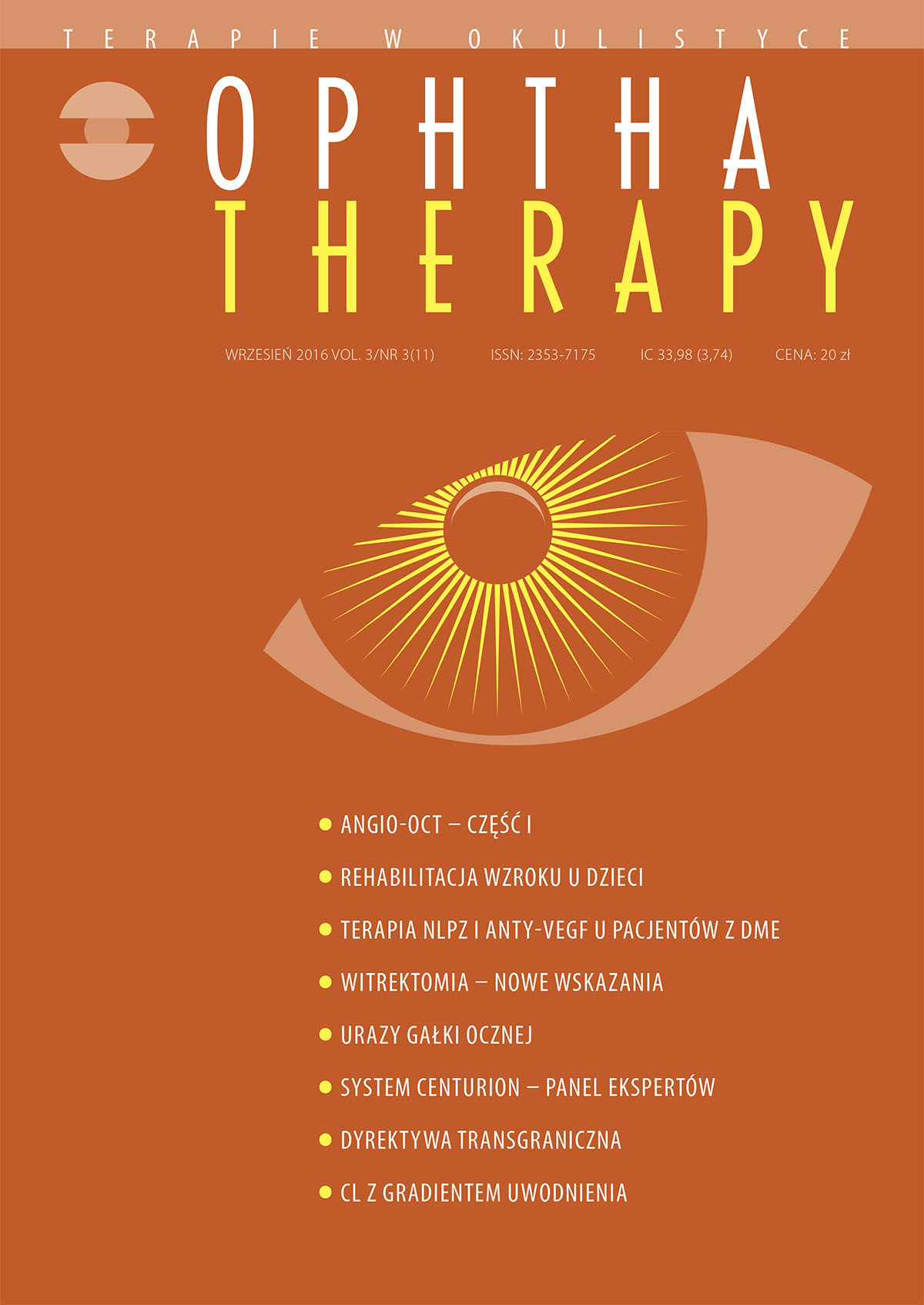Anti-VEGF treatment and fluorescein angiography images in patients with diabetic macular edema
Main Article Content
Abstract
Fluorescein angiography enables the appropriate qualification of patients for intravitreal injections, and simplifies decisions connected with treatment modifications during the anti-VEGF therapy. The aim of this paper is to present changes of fluorescein angiography images in the course of the anti-VEGF therapy in patients with DME, and in particular those with diffuse macular edema.
Conclusions: 1. Persisted leakage in fluorescein angiography images in patients with DME treated with intravitreal anti-VEGF injections may indicate increased risk of recurrence and the need for further treatment.
2. Anti-VEGF therapy proved to be effective not only in patients with diffuse DME, but also in other types of macular edema due to diabetic retinopathy.
3. Anti-VEGF monotherapy in DME does not always prevent progress of retinopathy to proliferative stage, and it does not eliminate the need for laser panphotocoagulation when NV develops.
Downloads
Article Details

This work is licensed under a Creative Commons Attribution-NonCommercial-NoDerivatives 4.0 International License.
Copyright: © Medical Education sp. z o.o. License allowing third parties to copy and redistribute the material in any medium or format and to remix, transform, and build upon the material, provided the original work is properly cited and states its license.
Address reprint requests to: Medical Education, Marcin Kuźma (marcin.kuzma@mededu.pl)
References
2. Bolz M, Ritter M, Schneider M et al. A systematic correlation of angiography and high resolution optical coherence tomography in diabetic macular edema. Ophthalmology. 2009; 116: 66-72.
3. Campochiaro PA, Wykoff CC, Shapiro H et al. Neutralization of vascular endothelial growth factor slows progression of retinal nonperfusion in patients with diabetic macular edema. Ophthalmology. 2014; 121: 1783-9.
4. Michaelides M, Kaines A, Hamilton RD et al. A prospective randomized trial of intravitreal bevacizumab or laser therapy in the management of diabetic macular edema (BOLT Study) 12- month data: raport 2. Ophthalmology. 2010; 117: 1107-18.
5. Wells JA, Glassman AR, Jampol LM et al. Diabetic Retinopathy Clinical Research Network: Aflibercept, bevacizumab or ranibizumab for diabetic macular edema. N Engl J Med. 2015; 372: 1193-203.
6. Nguyen QD, Shah SM, Khwaja AA et al. Two-year outcomes of the ranibizumab for edema of the macula in diabetes (READ-2) study. Ophthalmology. 2007; 114: 1860-7.
7. Cunha-Vaz J, Ashton P, Lezzi R et al. Sustained delivery fluocinolone acetonide vitreous implants: long-term benefit in patients with chronic diabetic macular edema. Ophthalmology. 2014; 121: 1892-903.
8. Sohn HJ, Han DH, Kim TI et al. Changes in aqueous concentrations of various cytokines after intravitreal triamcinolone versus bevacizumab for diabetic macular edema. Am J Ophthalmol. 2011; 152: 686-94.

